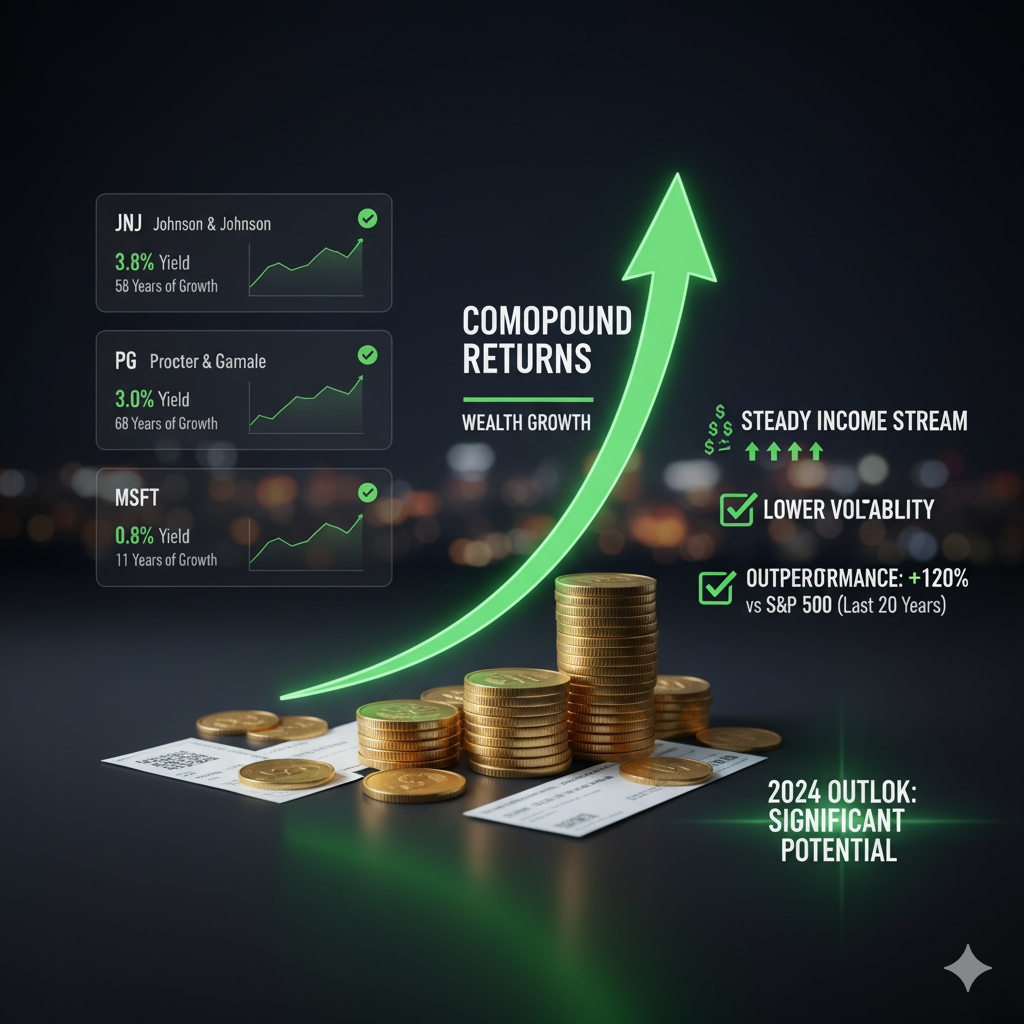
Dividend investing is a strategy that focuses on purchasing stocks that pay regular dividends. These dividends provide a steady stream of income, which can be particularly valuable in volatile market conditions. According to a report by Morningstar, dividend-paying stocks have historically outperformed non-dividend-paying stocks over the long term. This is because dividends not only offer a return on investment but also act as a buffer against market downturns.
The Benefits of Dividend Investing
One of the primary benefits of dividend investing is the potential for consistent income. Dividends are typically paid quarterly, providing investors with a regular cash flow. This can be especially beneficial for retirees or those looking to supplement their income. Additionally, dividend stocks often have lower volatility compared to growth stocks, making them a more stable investment option. A study by Bloomberg found that dividend-paying stocks have a lower beta, indicating they are less sensitive to market fluctuations.
Building a Dividend Portfolio
To build a successful dividend portfolio, investors should focus on high-quality, stable companies with a history of consistent dividend payments. These companies are often found in sectors like consumer staples, utilities, and healthcare, which have predictable revenue streams and strong cash flows. For example, Reuters highlights that companies like Johnson & Johnson (JNJ) and Procter & Gamble (PG) have a long track record of paying dividends and increasing them annually.
Dividend Reinvestment Plans (DRIPs)
Dividend Reinvestment Plans (DRIPs) allow investors to automatically reinvest their dividends into additional shares of the same stock. This compounding effect can significantly boost long-term returns. Investopedia explains that DRIPs are an excellent way to build wealth over time without the need for active management. By reinvesting dividends, investors can take advantage of dollar-cost averaging, which helps to smooth out the effects of market volatility.
Tax Considerations for Dividend Investors
Dividends are subject to taxation, but the tax rates can vary depending on the type of dividend and the investor’s tax bracket. Qualified dividends, which are paid by most U.S. corporations, are taxed at a lower rate compared to ordinary income. The IRS provides detailed information on dividend tax rates on its website IRS. Understanding these tax implications is crucial for maximizing the after-tax returns of your dividend investments.
Dividend Investing in a Bear Market
During bear markets, dividend stocks can provide a sense of stability and income. While the overall market may decline, dividend payments can help offset some of the losses. CNBC reports that during the 2008 financial crisis, dividend stocks outperformed non-dividend stocks, providing a safety net for investors. This resilience is one of the reasons why dividend investing is a valuable strategy in any market condition.
Dividend Growth vs. High-Yield Dividends
When building a dividend portfolio, investors have the option to focus on either dividend growth or high-yield dividends. Dividend growth stocks are those that have a history of increasing their dividend payments over time. These stocks are often from companies with strong fundamentals and a commitment to shareholder returns. High-yield dividend stocks, on the other hand, offer a higher current yield but may come with greater risk. Nasdaq suggests that a balanced approach, combining both dividend growth and high-yield stocks, can provide the best of both worlds.
Dividend Investing in 2024
As we look ahead to 2024, the potential for dividend investing to be a turning point in the market is significant. With the economy showing signs of recovery and interest rates expected to stabilize, dividend stocks are poised to attract more investors. MarketWatch predicts that dividend-paying companies will continue to be a safe haven for investors seeking income and stability. This makes 2024 an ideal time to explore and implement a dividend investing strategy.
Choosing the Right Dividend Stocks
Selecting the right dividend stocks involves a thorough analysis of a company’s financial health, dividend history, and growth potential. Key metrics to consider include the dividend yield, payout ratio, and earnings growth. A low payout ratio indicates that a company has room to increase its dividend, while a high earnings growth rate suggests the company is in a strong position to maintain or increase its dividend payments. TradingView offers tools and resources to help investors analyze these metrics and make informed decisions.
Common Pitfalls to Avoid
While dividend investing can be highly rewarding, it is not without its risks. One common pitfall is chasing high-yield dividends without considering the underlying company’s financial health. High-yield stocks may be overvalued or have unsustainable dividend payments. Another risk is overconcentration in a single sector or stock, which can expose investors to higher volatility. Morningstar advises diversifying your portfolio to mitigate these risks and ensure long-term stability.
Conclusion and Next Steps
Dividend investing is a powerful strategy that can provide consistent income and stability in any market condition. By focusing on high-quality, stable companies and using tools like DRIPs, investors can build a robust portfolio that stands the test of time. As we approach 2024, the potential for dividend investing to be a turning point in the market is significant. Now is the time to explore this strategy and position yourself for success.
